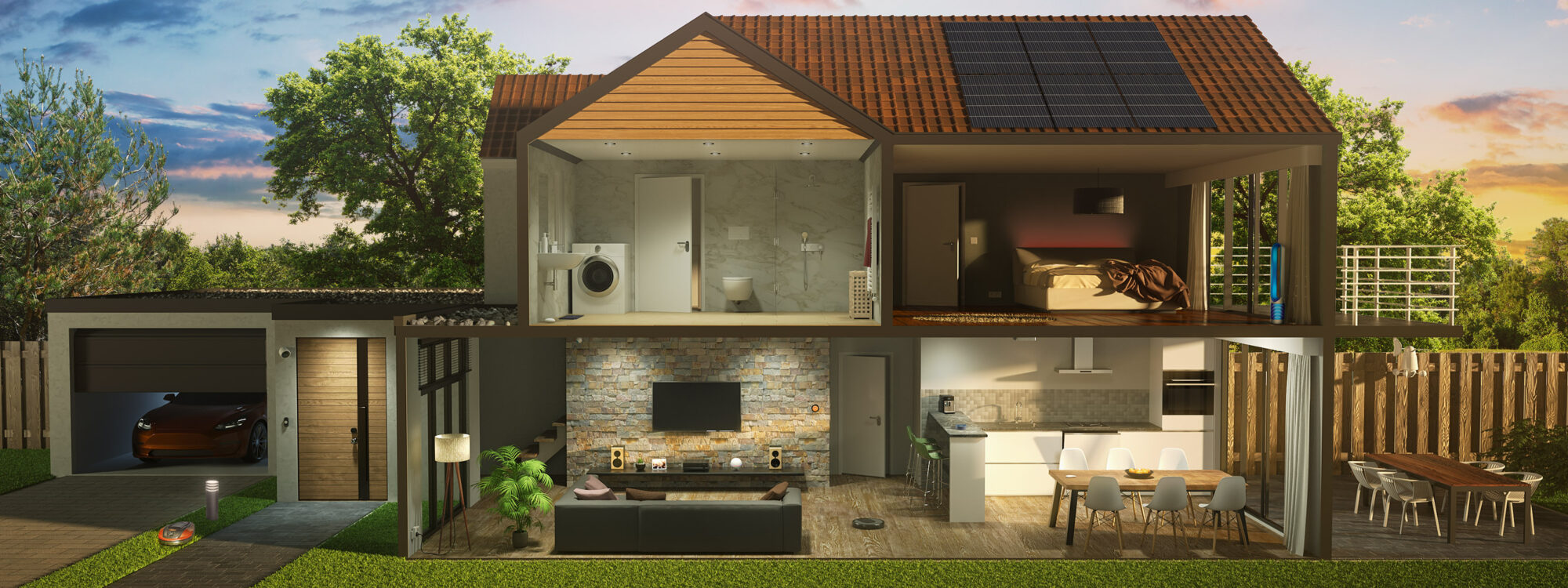
Energy Management in a Smart Home
Effective energy management is more crucial than ever, especially in modern smart homes. With the growing adoption of solar power and renewable energy sources, rising energy prices, and the use of heat pumps, heating boilers, electric vehicles, and other high-power appliances, managing energy consumption has become an essential aspect of modern homes—and a significant factor in monthly expenses.
So, how do you properly manage energy in your smart home? How do you make sure you balance energy with comfort and convenience? And how do you make sure you’re using energy and money effectively? Let’s look at the best ways to manage energy in a smart home.
Contents
- What is HEMS?
What is a Home Energy Management System (HEMS)? - Energy management factors
What factors play a role in the way you generate and consume energy at home? - Separate solutions
Which solutions are available right now for the different factors? - Energy management systems and smart home
How can control, insight and automation be centralized, and what are the characteristics of a good energy management system? - Homey as HEMS
Learn how to use home as an effective energy management system
What is a Home Energy Management System (HEMS)?
A Home Energy Management System (HEMS) optimizes and controls household energy generation, storage, and usage. By integrating smart devices and energy data from different sources, HEMS provides real-time insights and management tools to enhance energy efficiency and reduce costs.
It monitors consumption patterns, integrates with renewable energy sources like solar panels, and manages home energy storage systems. HEMS automates energy usage based on predefined settings or real-time conditions, adjusting thermostats, lighting, EV chargers, and appliances to minimize costs and respond to dynamic energy tariffs.
Energy management factors
Several factors heavily influence how you use, pay, and manage energy in your home. Consider these factors when you select a home energy management system. Don’t stop at the factors that apply to you and your house right now. Instead, take some time to think about what factors will also play a role in the future. Further, devices like P1 Smart Meters are essential for understanding and optimizing your home’s energy footprint.
Common factors for energy management at home
There are a couple of main factors around energy management found in modern-day homes:
- Solar at home
- Type of heating and cooling: city heating (hot water), gas, heat pump, or electrical/radiant
- Major energy consumers and their buffering capacity
- Availability and use of EVs
- Availability and use of home energy storage, like home batteries
- Type of energy contract: fixed, variable or dynamic
Together, these factors shape your home’s energy footprint. It’s wise to assess your current situation and future plans for each element, ensuring your energy management system is well-suited to your needs.
Even if you don’t know all your plans yet, it’s good practice to stay as versatile as possible with your HEMS choice. Consider one that connects with many different solutions and covers a wide range of use cases. Homey, especially Homey Pro, is an energy management powerhouse!
Some of the factors above are pretty self-explanatory, but let’s quickly walk through them:
Solar at home
Solar at home is an increasingly popular and ever-growing factor in home energy management systems. Installing solar panels on your home allows you to harness renewable energy to power your home, save money on your electricity bills, and reduce your carbon footprint. To effectively manage your solar energy, it’s important to monitor your energy consumption and production to ensure you’re using it efficiently, ideally when generating it.
For inspiration, check out Christian Doczekal’s use case for his Growatt solar panel system. Using Homey as a HEMS, he developed a system that cools his home during the summer with over 91% of the energy generated from his solar panels!
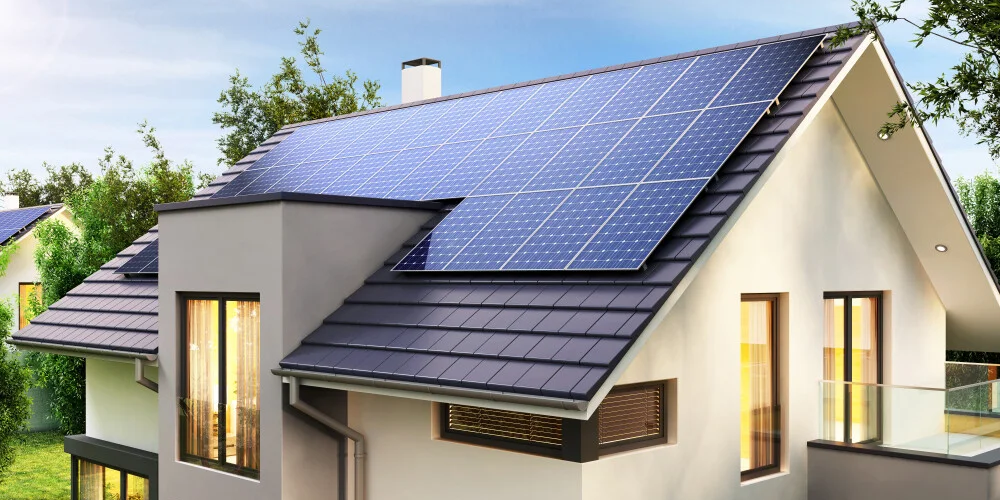
Homey works with a wide range of photovoltaic systems, providing advanced insights to help you optimize their performance. Check out the best inverter and solar panels compatible with Homey to learn more.
Type of heating
Heating (and potentially cooling) typically accounts for the highest energy use in homes. Multiple heating options are available, each with distinct characteristics. Generally, heat pumps are considered the most efficient electricity-based heating option. You often pair them with electric radiant heaters or space heaters for specific rooms, a popular combination for new, often ‘gasless’ homes.
Other solutions that use city heating, with hot water or gas, are less flexible by default. Since you can’t generate this energy yourself and prices are fixed for longer periods, these options offer more limited control over the energy cost. Generally, the more electric your heating system, the more you can steer and benefit from energy management. Savings from using less energy are, of course, attractive for all types of heating systems.
Major energy consumers and their buffering capacity
Take inventory of your home’s biggest energy consumers. In addition to heating, these might include washers, dryers, dishwashers, saunas, pools, electric or induction stoves, ovens, and freezers. Some of these devices have a buffering capacity, meaning they can store energy, offering significant energy management opportunities. If you have a dedicated energy storage system (ESS), you can utilize you savings even further with Homey.
For example, buffers can be freezers operating between -18 and -30 degrees Celsius, rooms heated or cooled between 19 and 22 degrees Celsius, pools with slightly varying temperatures, heat pump buffer vats that can be hotter or colder, or EVs and batteries charged between 60% and 95%. You might have more energy buffers at home than you originally thought. These buffers allow you to manage and schedule your energy consumption to favorable time slots, either when you’re generating solar power or when dynamic tariff prices are low.
Availability and use of EVs and home batteries
EVs use a lot of energy, all of which is obviously electrical. Since they can also act as buffers, having your EV, EV charger, or both connected to your home energy management system helps you utilize this energy-saving potential. The same holds true for home batteries, as they share many characteristics: EVs are essentially driving batteries from an energy management point of view.

To get the most out of your EV and EV charger, it's beneficial to also integrate your vehicle with Homey. Almost all electric vehicle offer some type of connectivity and Homey works with many brands. You can monitor battery levels, charging status, driving range or even remotely control your car. Check out which EVs integrate with Homey and learn about their smart capabilities.
Type of energy contract
Lastly, your energy contract type plays a significant role in your home energy management system. With the rise of renewable energy sources, energy prices can vary greatly, even within a single day. Some contracts, known as dynamic tariffs, account for this fluctuation and charge different hourly prices, typically providing rates 24 hours in advance.
With proper energy management, this type of contract can be much cheaper than traditional fixed or variable contracts. Dynamic tariffs, offered by companies like Tibber, are available in countries such as Norway, Sweden, Denmark, Germany, and the Netherlands, with more European countries quickly adopting these contracts to accelerate the energy transition.
If you have a fixed or variable contract, energy management focuses primarily on energy savings. However, with dynamic tariffs, it’s also about scheduling or shifting your usage to take advantage of those lower rates, allowing you to pay significantly less for the same amount of energy consumed.
Separate solutions for energy management
Numerous solutions exist for each of the factors we mentioned above. For truly effective energy management, it’s ideal to have a single HEMS system (like Homey) in control. When using single-point solutions, always choose those that can connect to other systems. This ensures your individual pick can integrate with a comprehensive home energy management system now and in the future.
Connected solar at home
Solar panels themselves are pretty dumb. The inverter is bridging the gap between your panels and your grid. For solar panels, there’s only one really important thing: being able to communicate how much energy you’re generating. There are two ways to do this:
- Get a smart and connected inverter. For instance, inverters from EnPhase, Growatt, SolarEdge, SMA, Tigo, GoodWe, and Huawei can connect to Homey Pro to communicate their energy generation to you.
- Get a smart meter add-on that can measure your solar generation. This is usually called a ‘3-phase meter’. Brands like Eastron and Tibber have add-ons that can do this and connect to an energy management system like Homey.
Connected heating solutions
Even though heating systems differ a lot, they are all controlled by thermostats. Nowadays, there are smart thermostats available for almost every heating setup. Ideally, you need a thermostat that your home energy management system can control for energy efficiency and savings. Homey is compatible with a wide range of thermostats for multiple heating configurations:
- Multi-zone heating with different thermostats. This is popular in Scandinavian countries like Norway and Sweden. Brands like Heat-it have connected room thermostats for this option.
- Heating with a main thermostat (either single or multi-zone). This is popular in Western Europe. Brands like Honeywell Evohome, Tado, and Netatmo have connected products for this.
- Multi-zone heating with just radiator thermostats (TRVs). This is popular in Germany/DACH and Central Europe. For this heating setup, brands like Eurotronic, Aqara, Danfoss, and Fibaro have smart radiator thermostats.
- Heating (and cooling) via air conditioning. While you might think of an AC for cooling, the fact that it’s based on a heat pump makes it a pretty decent and efficient heater as well. Brands like Daikin, Panasonic, and Mitsubishi have connected ACs, and Broadlink, SwitchBot, and Tado have Infrared AC controllers.
- Electric space heaters. Brands like Mill and Adax have connected space heaters. Next, you can switch most simple space heaters on and off with a simple smart plug.

Solutions for major energy consumers
This is the most challenging energy-saving factor since the type of major device used differs per household. However, certain categories and solutions tend to repeat themselves across homes:
- Connected appliances. Bosch, Siemens, and Miele are brands that offer these. You can schedule the start of programs with a management system like Homey.
- Smart Plugs. Add them to any mains-powered device to switch them on or off. Some feature energy measurements as well. Note that many devices require to press a ‘start’ button. For this, you could extend the plug with a SwitchBot bot, but the solution could be more elegant.
- Built-in relays. Built to switch heavy-duty gear, these built-in relays can switch any electrical product and are often invisible after installation. Note that electrical knowledge is required to install them. These are not the most user-friendly devices. They are available from a wide range of brands, including Heat-It, Fibaro, Qubino, Shelly, and more.
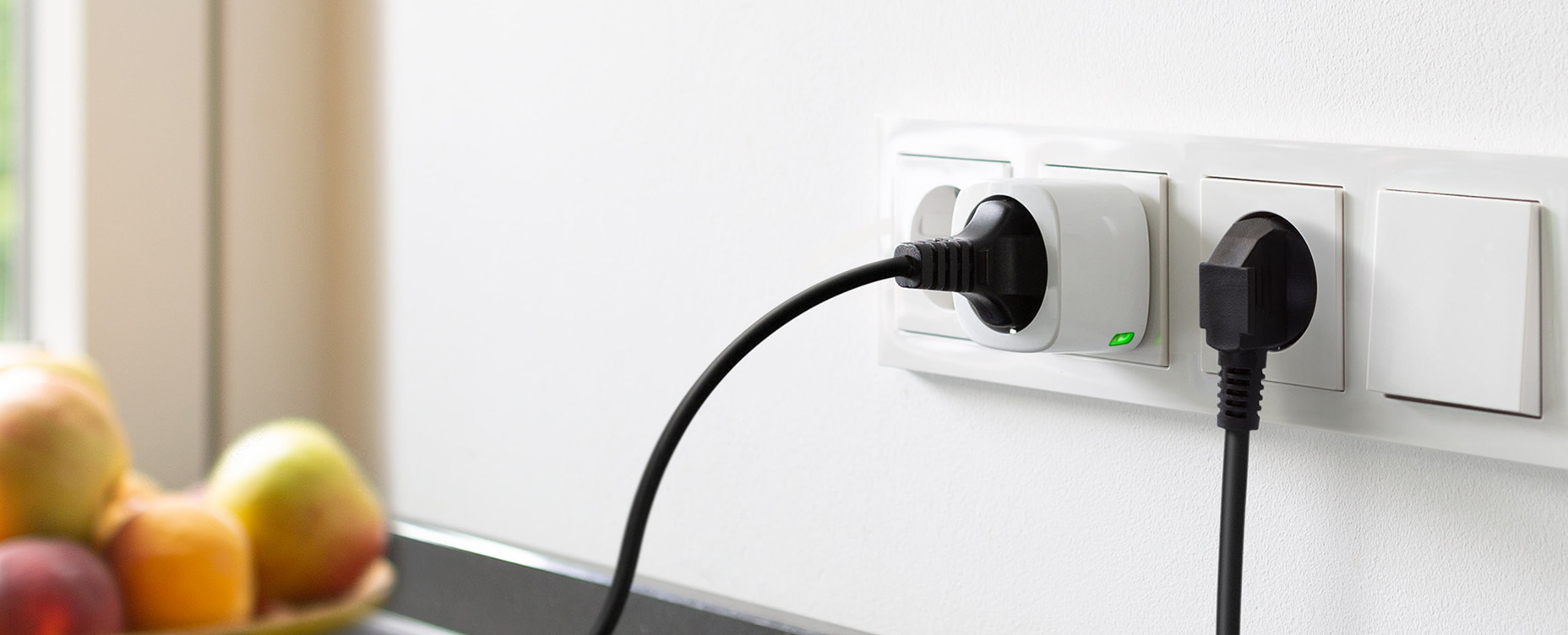
EVs, chargers, and home batteries
To integrate your EV into your home energy management, you must be able to control the charging of your EV via your management system like Homey. Most popular EV brands integrate with Homey Pro, including Tesla, Kia, Hyundai, VW, Audi, and Volvo. EV chargers from Easee and myenergi, as well as more, work with Homey Pro.
Type of energy contract
If you have a bit of an energy management setup, you might want to switch to a contract with dynamic tariffs. You can save quite a lot on your electricity bill. Dynamic tariffs charge you the real energy price. This removes risk for the energy company, meaning many departments can be scrapped.
There are many options out there, which vary per country. In Europe, Tibber is the most mature, as they also have their own HAN/P1 dongles, proper app, integration with Homey, and more tools to monitor your usage. However, other providers will also work relatively well since the wholesale prices in most regions are known. You can often integrate these in your management system like Homey.
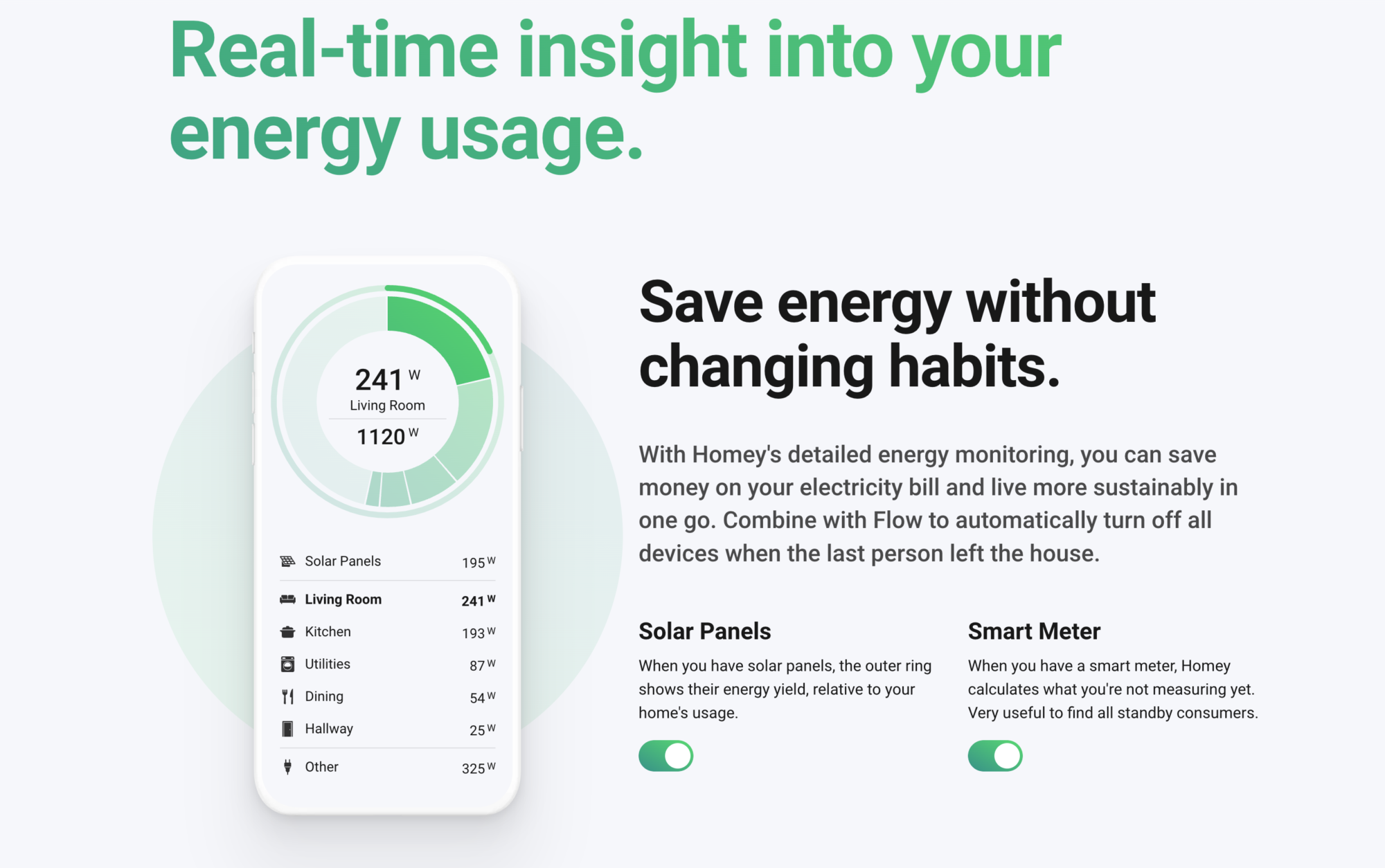
Energy management and smart home systems
Okay, we’ve covered the various factors affecting your home’s total energy consumption. So, where do we start to achieve efficient energy management in a modern home? The key lies in having a single Home Energy Management System (HEMS) in control and a compatible energy reader. To explore different energy monitoring options, check out Energy Monitoring Solutions Around the World.
Energy management system possibilities
Homey connects all your home’s energy solutions under one umbrella. With devices like the Homey Energy Dongle, you can gain real-time insights into your energy consumption and generation. The true power, however, lies in automation.
For instance, you can schedule energy consumption to align with your solar panel generation. This enables you to heat or cool your home, charge your EV, or run your dishwasher when solar energy is available.
Similarly, with dynamic tariffs, you can optimize usage based on price fluctuations. When prices are low, you can heat or cool your home extra or fully charge your EV. When prices are high, you can delay usage and rely on your home’s energy buffers to maintain comfort. You can even generate solar energy during peak prices to maximize the benefits. The possibilities are endless with a unified system like Homey controlling your home.
A good system for energy management
A good system for energy management should have a couple of defining characteristics:
- Connect with as many energy solutions as possible, giving you ultimate control and freedom of choice.
- Be able to work with and automate based on dynamic tariff pricing.
- It allows you to easily automate your home based on your wishes for comfort, convenience, and energy without needing to learn code.
- Be user-friendly and accessible from anywhere in the world for monitoring and control.
- Bonus: also integrate with the rest of your smart home for a single, unified experience and even more energy savings.
Even though energy is a hot topic right now, not many systems are on the market that tick all the boxes. Building a user-friendly system that is as versatile in control and automation is not easy or quick.
Some proprietary solutions cover some HEMS functions but are hard to integrate with other systems and often require extensive and involved installation. On the other end of the spectrum, there are DIY systems that require you to build everything from scratch and learn how to code.
Homey as Home Energy Management System
With that said, what better tools exist to automate and dynamically adjust devices and appliances in a smart home than the world’s most advanced smart home hub?
While Homey is not specifically a Home Energy Management System (HEMS), it can perform all functions (and beyond) typical of HEMS. Using P1 smart meters like our Homey Energy Dongle, it receives real-time data about your home's energy usage. Further, Homey seamlessly connects and automates various smart devices from different brands and protocols, including lighting, heating, security, entertainment, and solar systems.
Let’s paint a clearer picture with a melodic analogy.
Imagine your smart home as a well-orchestrated concert. Homey is the maestro, flawlessly conducting an ensemble of smart devices, from thermostats and lights to security and solar systems. Each device plays its part in harmony, following Homey’s lead to create a symphony of energy efficiency, convenience, and comfort.
Like a concert conductor adjusts the tempo and dynamics to perfect the performance, Homey dynamically manages your energy use, gives you real-time insights, and provides unlimited control over your home’s energy consumption and generation.
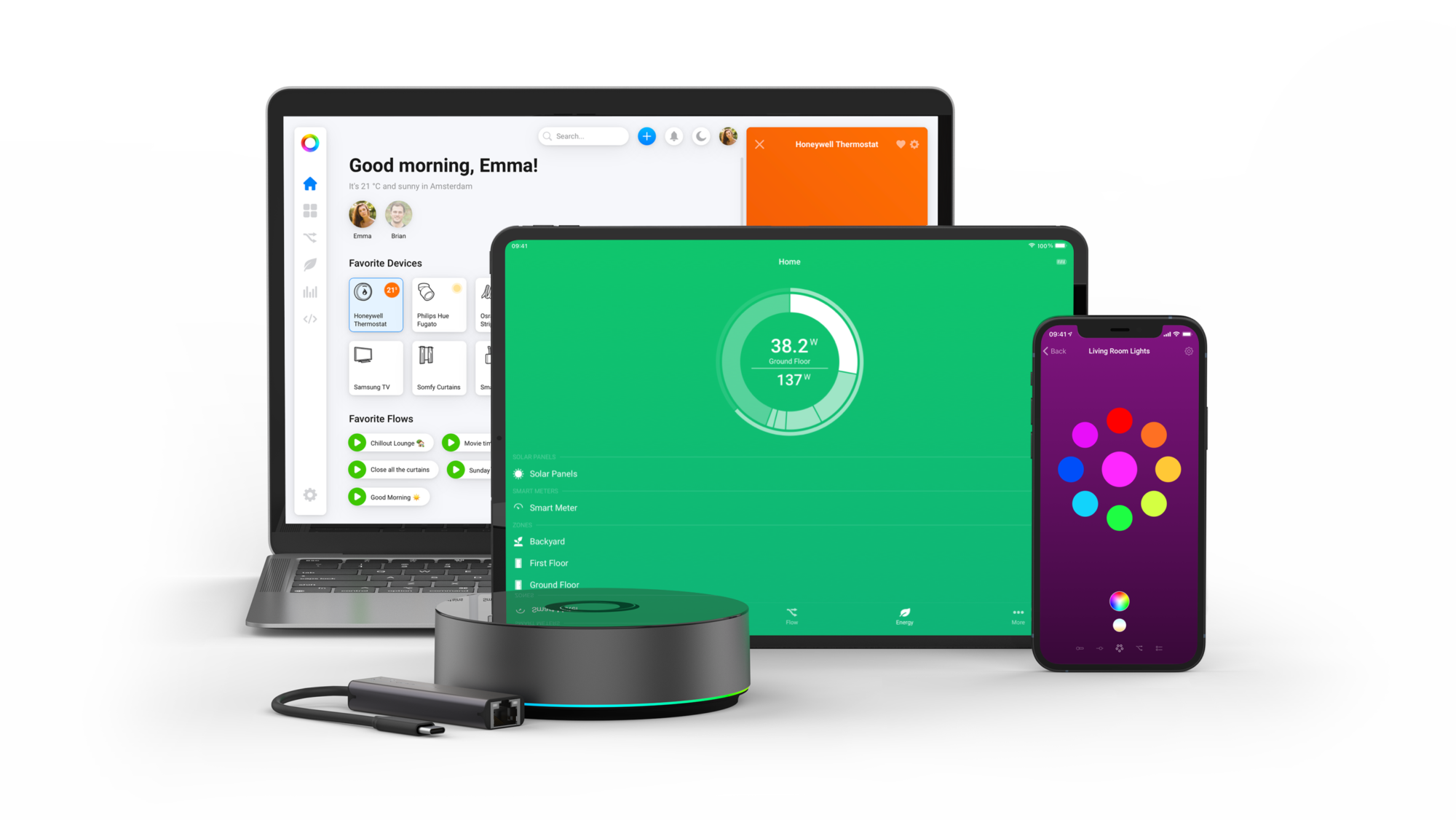
With Homey, we set out to build a better smart home. Energy management is a core part of any smart home, and Homey already connects to over 50,000 devices from over 1,000 brands. In addition, Homey Flows and Homey Advanced Flows allow automation based on anything – from a motion sensor to your solar panel output and the energy prices of this hour. The possibilities are limited solely by your imagination and creativity.
We built Homey to be versatile, powerful, and user-friendly. It integrates with almost all connected brands and solutions, has powerful Insights and automation tools, and requires no coding.
This makes Homey a very powerful home energy management system and the world’s most advanced smart home hub. The Homey app lets you start with the basics, including lights, plugs, and thermostat control, completely free.
We have our powerhouse, Homey Pro, for the real work, including solar panel inverters, EVs, and Advanced Flows.